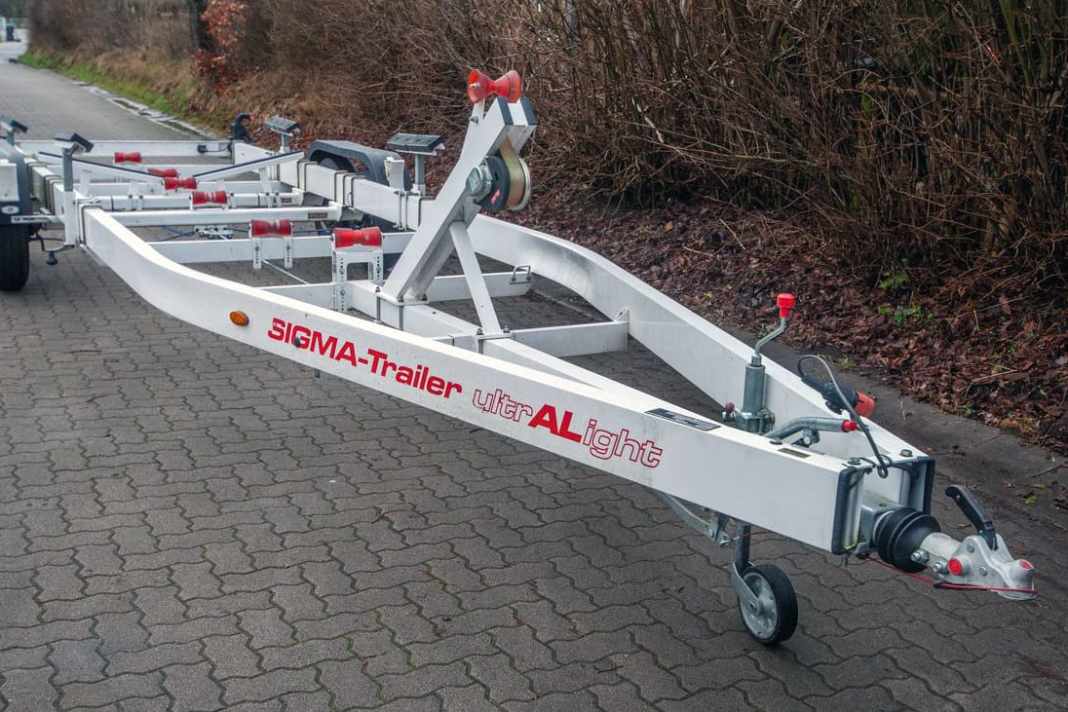





This article is part of the special season start. All parts:
- Cast off - how to get the new season off to a smooth start
- Checklist: Fit for the new season - the checklist
- Cleaning, polishing and care
- The best care and cleaning products for boats
- Last-minute tips from the experts at Pantaenius for the start of spring
- Checklist for the boat trailer
- The best tips from the Pantaenius specialist
- Changing the oil in a boat engine - here's how!
- Special pumps - changing oil in no time at all
- To check the cooling circuit
- How to renew the antifouling
- Boat equipment - the more, the better
The boat has been cleaned in winter storage, the engine has had a fresh oil change and the anticipation of the upcoming season has been aroused. However, the start of the season is often prevented by avoidable defects or faults on the trailer. After often more than half a year of standing, a tyre is suddenly flat, the wheel bearings are making noises or the brakes are tight. Whether after buying a used boat, at the start of the season or at the end of the season, the steps shown here can be used to check the condition of the trailer and prevent possible defects at an early stage.
Particularly with tandem trailers with a heavy load, you should ensure that the total mass of the attached load can be carried by just three tyres in an emergency, even after a tyre burst. Unfortunately, many manufacturers often fail to take this into account, and a burst tyre can quickly lead to the complete loss of the trailer combination due to a chain reaction. The correct tyre pressure on the towing vehicle and trailer is of course a basic requirement here. But in addition to the pressure, there are various other things to consider with tyres. Cracks in the tyres are not only caused by age, but also by prolonged exposure to the sun when the trailer is parked in the harbour during the season. Tyres should therefore not be older than six years. The age of the tyres can be easily determined from the DOT number on the sidewall.
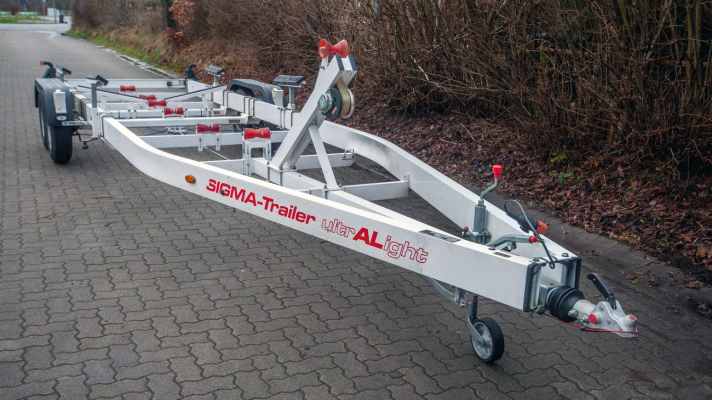
To prevent a flat tyre, the boat and trailer can be jacked up in winter storage. This also reduces the load on the wheel bearings. If the wheels can turn freely, the wheel bearing play is easy to check. If there is movement in the vertical or horizontal plane or if the wheels make running noises when turning, the wheel bearings should definitely be replaced or, if possible, adjusted. Whether before long tours or just a short transfer trip, the lighting system should be fully intact both in the light and in the dark. It always makes sense to carry spare bulbs for all lights on the trailer in the vehicle. During frequent slips, the trailer is not only exposed to water from above, but also from below. It is therefore highly advisable to grease or lubricate all components that are regularly submerged in water in order to prevent corrosion. If the trailer is slipped in salt water, it is also essential to check beforehand whether a washing system is available so that salt deposits can be removed immediately.
Most manufacturers have now replaced steel cable winches with belt winches. These are not only safer, but also save a few kilograms in weight. Nevertheless, regular checks should be carried out to ensure that the belt is not torn. Before every journey, you should also check that any additional parts such as a spare wheel or the brake wedges are securely locked in the holder provided. The breakaway cables of the handbrake are usually fitted with a plastic or rubber sheath. Here, too, you should always check that no rust has infiltrated the sheathing. Rust on the metal makes the cable brittle and may cause it to break. With detachable towbars, it is advisable not to wrap the cable around the ball head, but to attach it to the vehicle. In some countries, this is even mandatory and is punishable by a heavy fine if not observed.
However, after a few years on the road, many trailers also have more serious defects such as torn cranked cross members or holes. The weld seams and holes are often a weak point in the construction that can cause serious accidents. The same applies to bracing points, which are often welded to the frame. The welded points should therefore be carefully inspected before every journey to prevent the frame from breaking on the road.
1. check lighting
For the safety of all road users, the complete lighting system, including side marker lights and marker lights, should be checked before every journey.

2. check the pulling head for wear
The small green marking on the towing head of a modern trailer indicates its condition. If the coloured wear indicator turns red, it is time to have the head replaced.

3. check the breakaway cable
In dangerous situations, the breakaway cable can bring the trailer to a standstill even without a towing vehicle. It is therefore important that it is not torn or rusty.
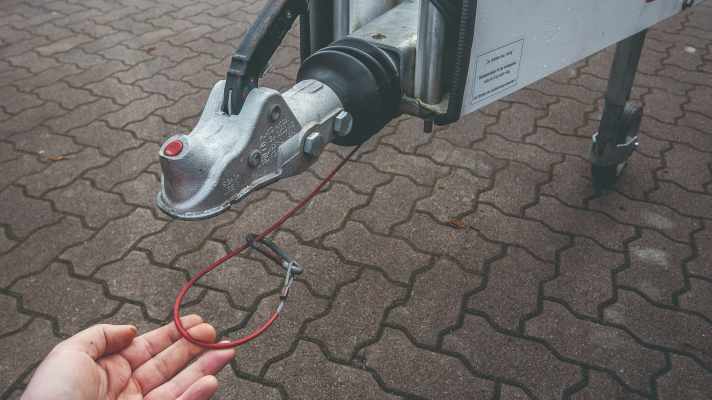
4. check cable winch
The moving parts of the winch should be lubricated regularly to prevent corrosion. A belt is not only safer, but also saves weight.
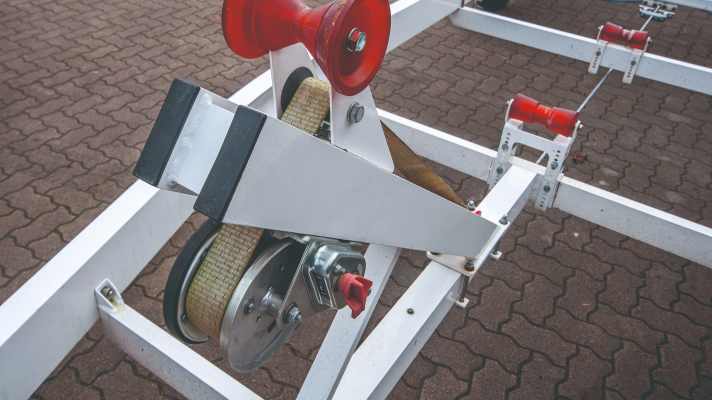
5. check for cracks
Many trailers tear, particularly at welded seams. Regular inspection of the crossbars, drill holes and other frame parts is therefore strongly recommended.
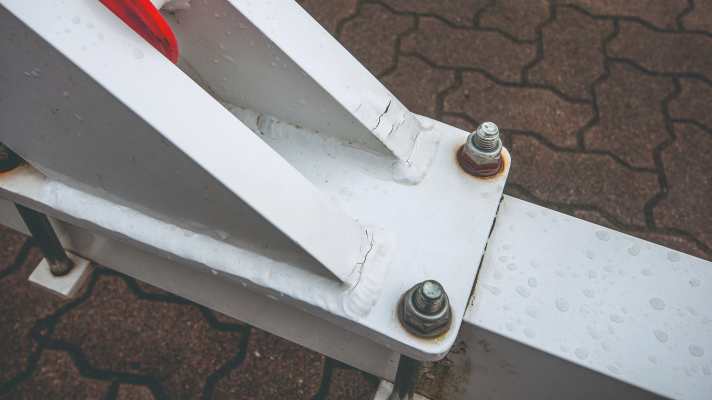
6. retaining rings
Small side rings on the keel rollers prevent the shaft from slipping out. To avoid damage, you should check regularly that they are all in place.

7. observe load capacity
Many trailers are delivered with tyres that just meet the minimum requirements. The load capacity of three tyres should be able to carry the weight of the trailer and boat in an emergency.
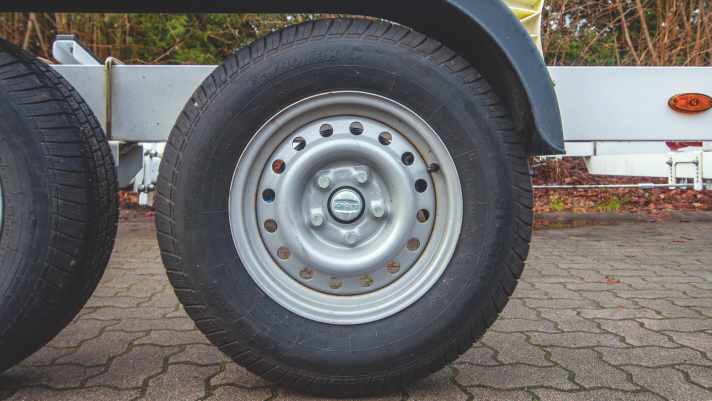
8. note age
The DOT number stands for the week and year of manufacture. Tyres should not be more than six years old. If the tyres have been standing for a long time, they should be relieved to prevent flat spots
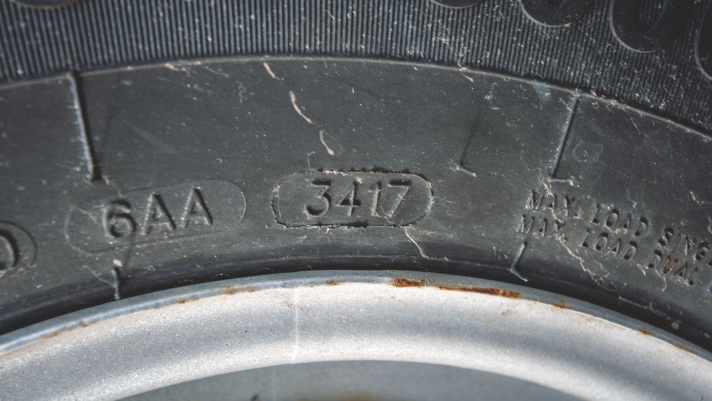
9. check wheel bearing
Defective wheel bearings are often signalled by humming noises. A vertical and horizontal wobble on the wheel can be used to check whether it needs replacing.

10. overrun device
When braking, the trailer often slips hard onto the trailer coupling. Greasing the grease nipples is important to ensure that the brakes work safely.
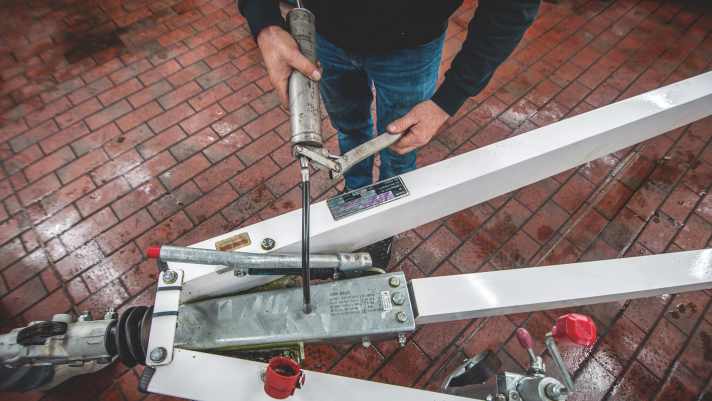
11. contact spray
Electrical currents cannot flow well with corroded connector pins. The pins, which are often exposed to the elements, should therefore be sprayed with contact spray from time to time.
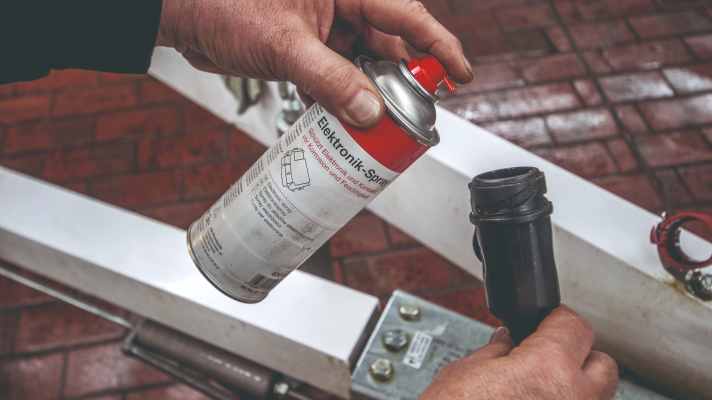
12. lubricate linkage
The brake linkage often gets water on it, whether it is on the road in the rain or when you are slipping. To prevent rust on the linkage and bolts/nuts, you need to grease them.
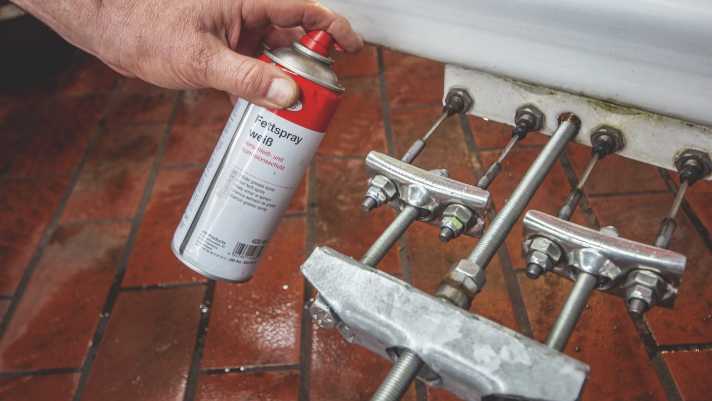
13. support spindles
As the spindles of the adjustable side supports are only turned very rarely, it is advisable to turn and lubricate them regularly to prevent them from rusting.

14. oil the jockey wheel
The jockey wheel delivers top performance. A small opening at the upper end allows oiling with an oil can. The crank should now move freely without squeaking.

15. polyurethane rollers
If you slip frequently, it makes sense to replace the black rollers with polyurethane rollers. They last longer and have better rolling behaviour when slipping.

This article is part of the special season start. All parts:
- Cast off - how to get the new season off to a smooth start
- Checklist: Fit for the new season - the checklist
- Cleaning, polishing and care
- The best care and cleaning products for boats
- Last-minute tips from the experts at Pantaenius for the start of spring
- Checklist for the boat trailer
- The best tips from the Pantaenius specialist
- Changing the oil in a boat engine - here's how!
- Special pumps - changing oil in no time at all
- To check the cooling circuit
- How to renew the antifouling
- Boat equipment - the more, the better

